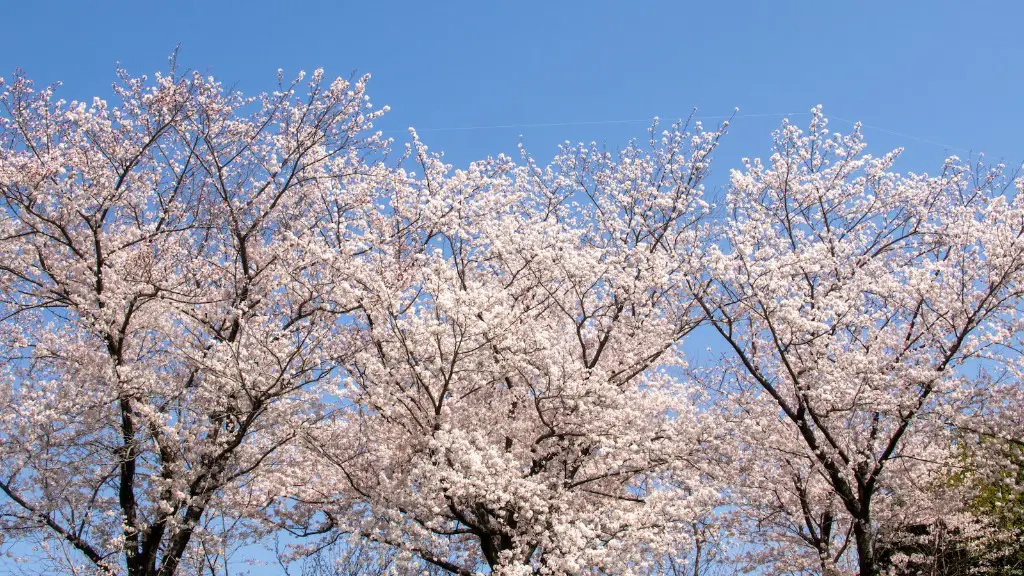Preparing to Plant Your Japanese Cherry Blossom Tree
Planting a Japanese cherry blossom tree can be easy and rewarding, but you must ensure you have the right conditions and are prepared properly before you start. The most important aspect of this preparation is to determine what kind of soil you have and whether it is suitable for growing a Japanese cherry blossom tree.
If you live in an area with acidic soil conditions, then you need to amend the soil with amendments such as fertilizer, manure, and compost. If the soil is too alkaline, then you may need to add lime or other mineral supplements. Additionally, you need to check the drainage of the soil to ensure it is not waterlogged, as this can cause root rot in Japanese cherry blossom trees.
Once your soil is prepared, you should select a spot in your garden where the tree will receive plenty of sunshine. Japanese cherry blossom trees require at least six hours of sunlight each day. Planting the tree too close to other trees or buildings can interfere with the amount of sunlight it receives, so make sure to find an appropriate location. It’s also important to note that Japanese cherry blossom trees can reach a considerable height, so you should leave plenty of space for the tree to grow.
Planting the Tree
Once you have all your supplies, you’re ready to plant the tree. Dig a hole in the soil that is twice as wide as the root ball of the tree. The hole should also be deep enough so that when you place the tree into it, the root ball will be the same level as the surrounding soil.
Before planting, you should carefully inspect the roots of the tree for any signs of disease or damage. If any of the roots appear damaged or diseased, you should trim them away to prevent any problems from spreading. After placing the tree into the hole and back-filling with soil, be sure to water the tree thoroughly and then spread an inch or two of mulch around the base to help retain moisture in the soil.
Caring for Your Japanese Cherry Blossom Tree
Once you have planted your Japanese cherry blossom tree, it is important to provide it with the proper care in order to ensure it stays healthy and happy. Water the tree thoroughly on a weekly basis and prune away any dead or diseased branches as they appear. While the tree needs at least six hours of sunlight per day, it is also important to provide some shade from heat and wind.
You should also fertilize your Japanese cherry blossom tree with a balanced fertilizer during the tree’s spring and summer growing season. This will ensure your tree gets the nutrients it needs to grow and stay healthy. Japanese cherry blossom trees also require adequate drainage, so be sure to monitor the level of water in the soil regularly and provide drainage if necessary.
Preventing Disease and Pests
In order to keep your Japanese cherry blossom tree healthy, you should be vigilant in preventing disease and pests. Pruning away dead or diseased branches can help to reduce the spread of any infection. You should also be careful when it comes to water and fertilizer, as too much of either can cause stress on the tree, making it more vulnerable to disease or pests.
It’s also important to inspect the tree regularly for signs of pests. Japanese cherry blossom trees are susceptible to mites, aphids, and scale insects. If you notice any of these pests on your tree, contact a professional immediately to treat the tree before the pests can cause any serious damage.
Fall Care
In the fall, you should continue to provide adequate care for your Japanese cherry blossom tree. Prune away any dead branches and trim the tree to shape if necessary. You should also fertilize the tree one last time before the winter so that it can store nutrients for the winter. Finally, be sure to water the tree thoroughly one last time before the temperatures drop too low.
Winter Prep
In the winter months, you should take steps to protect your Japanese cherry blossom tree from the cold weather. If your tree is susceptible to frost damage, you should cover it with a sheet or burlap during especially cold or dry nights. You should also mulch around the base of the tree to insulate the roots and prevent any frost damage.
In Conclusion
With proper care and maintenance, your Japanese cherry blossom tree can be an eye-catching addition to your garden. By following the tips outlined above, you can be sure that your tree will stay healthy and happy for years to come.

